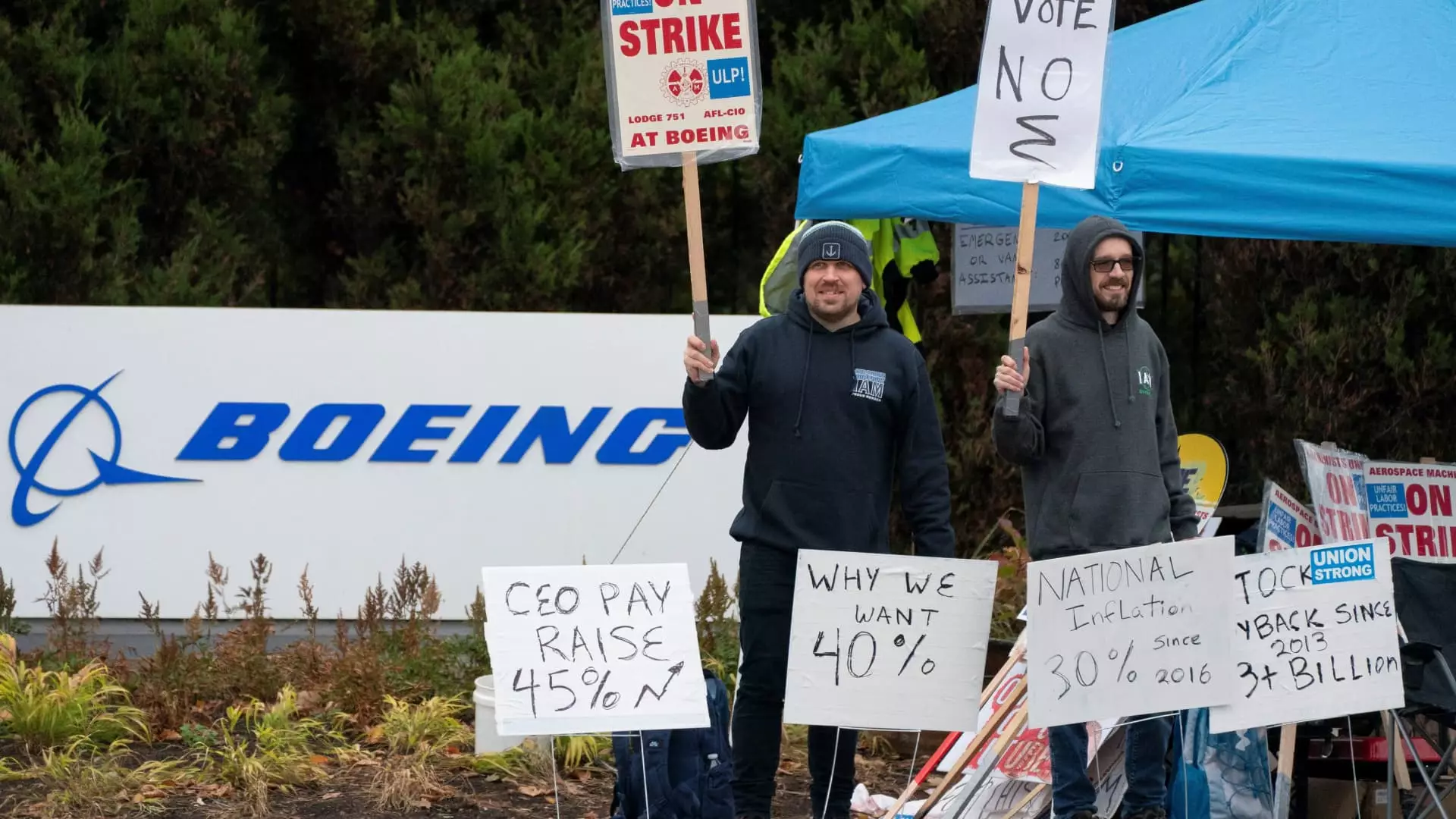In a significant development for one of the world’s leading aerospace manufacturers, Boeing, the machinists’ union, known as the International Association of Machinists and Aerospace Workers District 751, has reached a tentative agreement aimed at resolving a nearly seven-week-long strike. This strike commenced on September 13, after union members voted against a proposed contract. The adverse impacts of this work stoppage not only disrupted Boeing’s manufacturing capabilities but also complicated the company’s efforts to recover from previous financial setbacks.
Given that over 32,000 machinists primarily based in the Seattle area walked off the job, the ramifications of this strike have been considerable. The workers’ dissatisfaction stemmed largely from inadequate wage offers in light of soaring living costs in Seattle—a region experiencing unprecedented economic growth fueled by tech giants like Microsoft and Amazon.
The freshly negotiated offer from Boeing encompasses a substantial 38% increase in wages over four years, a notable improvement from an earlier proposed 35%. Union leaders assert that this new offer also results in compounding pay increases nearing 44%. Additionally, workers now have the option to accept a one-time ratification bonus of $12,000, or alternatively, choose a lesser bonus combined with a 401(k) contribution.
The union has emphasized the necessity for its members to vote in favor of the new contract, stating that prolonged striking could ultimately hinder their bargaining power and result in diminished future offers. This when juxtaposed against the backdrop of an already tenuous financial situation for Boeing, wherein the company recorded over $6 billion in losses in the last quarter, highlights the delicate balancing act inherent in labor negotiations. Union representatives have voiced their perspective that prolonging the strike might not be advantageous for their members, suggesting that they have already maximized their bargaining potential.
Boeing is grappling with multifaceted problems that complicate its scenario further. Issues related to production flaws and safety incidents have plagued the company, most notably with the Boeing 737 Max 9, which experienced a serious in-flight incident earlier this year. These challenges have not only put a strain on Boeing’s operations but also led to a larger crisis of confidence among stakeholders regarding the company’s stability and future direction.
As the machinists’ strike unfolded, it coincided with Boeing’s plans to stabilize its footing in the aerospace industry. The company’s leadership, including recently appointed CEO, Kelly Ortberg, expressed the necessity of finding resolutions that comply with both company interests and employee needs. However, the rejection of prior proposals by workers indicates a profound disconnect between management’s expectations and employees’ requirements.
This strike encapsulates a broader struggle faced by workers in many industries amid rising inflation and mounting cost pressures. The achievements in wage negotiations signify a contingent victory for the machinists. Nonetheless, this also raises critical questions regarding the sustainability of these wage increases as the cost of living continues to escalate.
As the union members prepare to vote on the newly negotiated offer, their decision will not only impact their immediate financial situation but also set a precedent for future labor negotiations in the aerospace sector. The context of this strike is integral to understanding the dynamics between labor and management in the face of changing industry landscapes and economic challenges.
While the new contract proposal marks a proactive step towards resolution, it is imperative to consider the broader implications it holds for Boeing, its dedicated workers, and indeed, the entire aerospace industry wrestling with similar issues. The outcome of this vote will be crucial, and it remains to be seen how both sides navigate the fragile balance between labor demands and corporate viability going forward.

